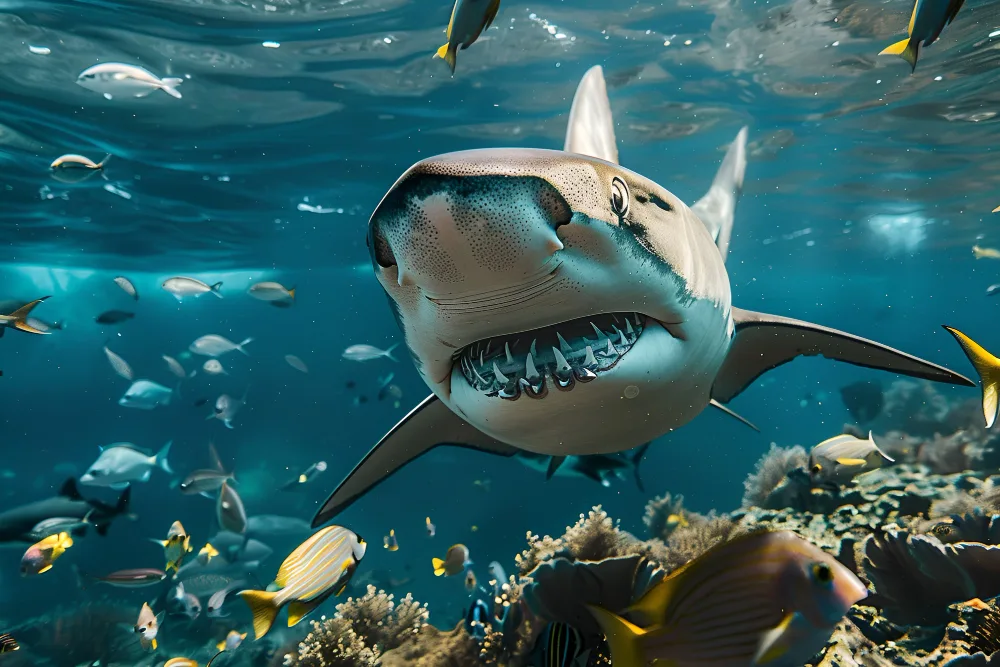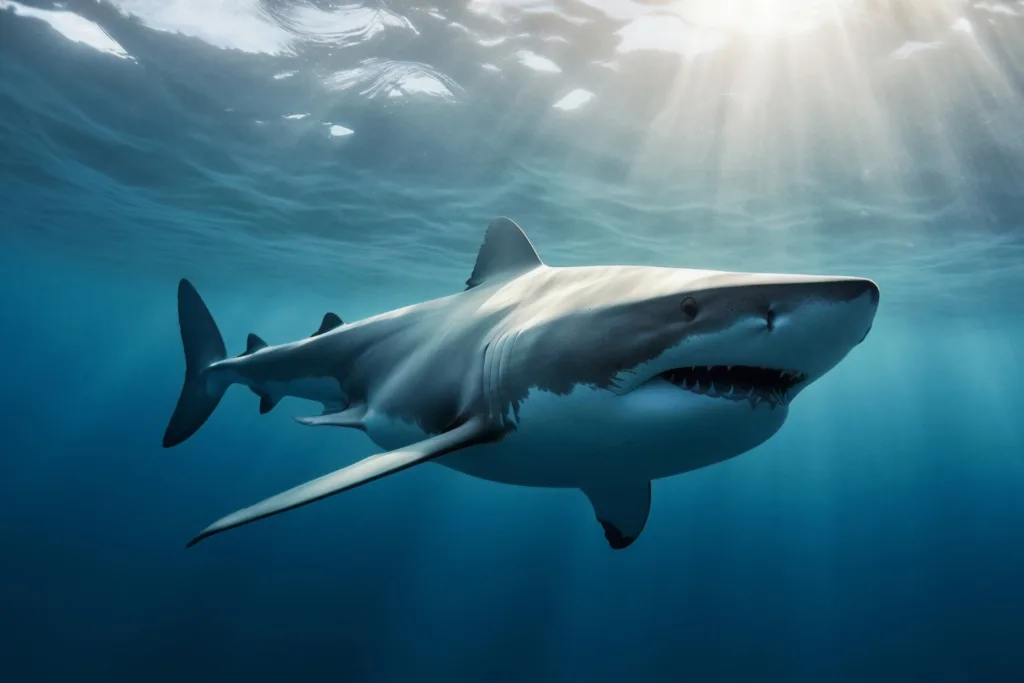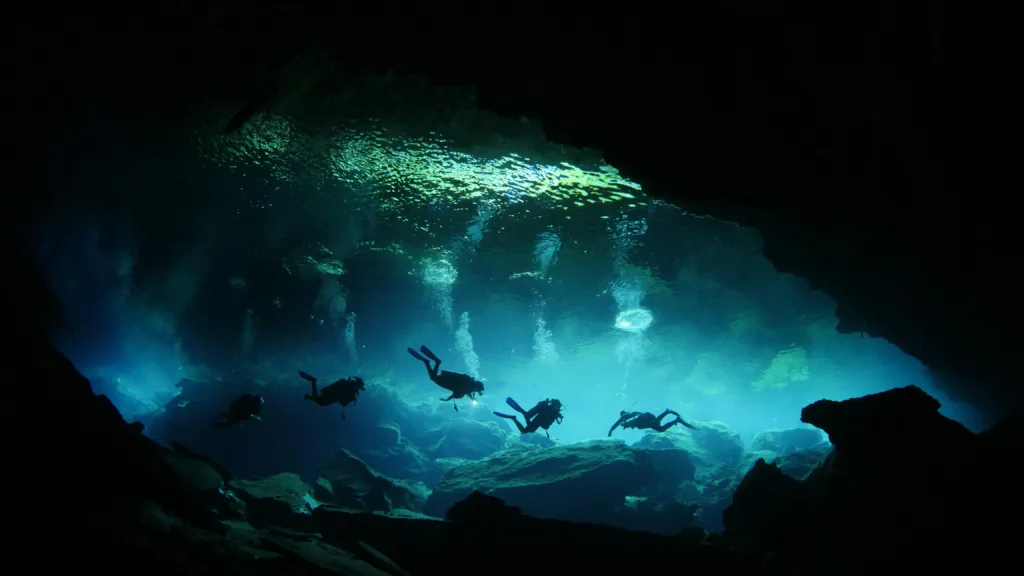Table of contents
Exploring the Presence of Sharks in the Red Sea
The Red Sea, with its mesmerizing azure waters and teeming marine life, has long been a source of fascination for divers and marine enthusiasts alike. Among the various creatures that inhabit its depths, the question often arises: are there sharks in the Red Sea?

Understanding the Red Sea Ecosystem & Sharks in the Red Sea
Before delving into the presence of sharks, it’s essential to grasp the intricacies of the Red Sea’s unique ecosystem. Spanning over 1,200 miles in length and boasting remarkable biodiversity, this body of water is home to a staggering array of marine species, from vibrant coral reefs to majestic marine mammals.
The Myth of Shark-Free Waters
Despite popular misconceptions, the notion that the Red Sea is devoid of sharks is simply untrue. In fact, the Red Sea harbors a diverse population of shark species, ranging from the iconic Reef Shark to the elusive Hammerhead. While encounters with these apex predators are relatively rare, they do occur, adding to the allure and mystique of diving in these waters.
Species Diversity: Sharks in the Red Sea

Among the most commonly encountered shark species in the Red Sea is the Oceanic Whitetip Shark (Carcharhinus longimanus). Known for its distinctive white-tipped fins and graceful swimming patterns, the Oceanic Whitetip is often spotted in deeper waters, where it preys on a variety of marine organisms.
Another prominent resident of the Red Sea is the Grey Reef Shark (Carcharhinus amblyrhynchos). With its sleek, streamlined body and inquisitive nature, the Grey Reef Shark is frequently observed patrolling coral reefs and underwater formations in search of prey.
Additionally, occasional sightings of Hammerhead Sharks (Sphyrna spp.) have been reported in the Red Sea, though these encounters are less common due to the species’ elusive nature and preference for deeper, open ocean environments.
Safety Precautions for Divers from attack of Sharks in the Red Sea
While the presence of sharks adds an element of excitement to diving in the Red Sea, it’s essential for divers to exercise caution and adhere to established safety protocols. Diving with a reputable dive operator, maintaining situational awareness, and respecting the natural behavior of marine life are all key factors in ensuring a safe and enjoyable diving experience.
Conservation Efforts and Marine Protection

As stewards of the marine environment, it is our collective responsibility to protect and preserve the delicate ecosystems of the Red Sea and beyond. Conservation initiatives aimed at safeguarding shark populations, such as marine protected areas and sustainable fishing practices, play a vital role in maintaining the ecological balance of this biodiverse region.
Conclusion: Embracing the Wonder of the Red Sea
In conclusion, while the presence of sharks in the Red Sea may evoke a sense of awe and wonder, it is important to recognize that these magnificent creatures are an integral part of the marine ecosystem. By fostering a deeper understanding of sharks and their role in the natural world, we can continue to explore and appreciate the beauty of the Red Sea while ensuring the long-term sustainability of its marine resources.
FAQs Related to Sharks in the Red Sea
Here are the FAQs along with their answers:
- What types of sharks can be found in the Red Sea?
- Various species inhabit the Red Sea, including reef sharks like whitetip reef sharks, blacktip reef sharks, and grey reef sharks, as well as larger species such as oceanic whitetip sharks and hammerhead sharks.
- Are sharks common in the Red Sea?
- Yes, sharks are relatively common in the Red Sea due to its rich biodiversity and suitable habitat for various shark species.
- Is it safe to swim in the Red Sea with sharks around?
- Generally, swimming in the Red Sea is safe as long as basic safety precautions are followed. Shark attacks are rare, and most species present in the Red Sea are not aggressive towards humans.
- What is the largest species of shark found in the Red Sea?
- The whale shark is the largest species of shark found in the Red Sea. These gentle giants are filter feeders and pose no threat to humans.
- Do sharks pose a threat to humans in the Red Sea?
- While shark encounters can occur, attacks on humans are extremely rare in the Red Sea. Most sharks are not interested in preying on humans and will generally avoid interaction.
- How do sharks contribute to the ecosystem of the Red Sea?
- Sharks play a crucial role in maintaining the balance of the marine ecosystem by regulating prey populations and ensuring the health of coral reefs and other habitats.
- Are there any conservation efforts in place to protect sharks in the Red Sea?
- Yes, various conservation organizations and marine parks in the Red Sea region are dedicated to protecting sharks through research, education, and the establishment of marine protected areas.
- What are some popular dive sites in the Red Sea where sharks can be spotted?
- Popular dive sites for shark encounters in the Red Sea include Ras Mohammed National Park, Brothers Islands, Elphinstone Reef, and Daedalus Reef.
- What is the behavior of sharks in the Red Sea?
- Shark behavior in the Red Sea varies depending on the species, but most are primarily solitary hunters or live in small groups. They play a vital role in maintaining the health and diversity of the marine ecosystem.
- Are there any endemic species of sharks found only in the Red Sea?
- Yes, the Red Sea is home to several endemic shark species, including the Red Sea torpedo and the Red Sea swellshark.
- Do tourists come to the Red Sea specifically for shark diving?
- Yes, shark diving is a popular activity for tourists visiting the Red Sea, with many dive operators offering guided excursions to encounter these fascinating creatures in their natural habitat.
- What are the main factors affecting shark populations in the Red Sea?
- Factors such as overfishing, habitat degradation, and climate change pose significant threats to shark populations in the Red Sea, highlighting the importance of conservation efforts to protect these vulnerable species.


1 thought on “Unraveling Red Sea’s Secrets: Are There Sharks in the Red Sea?”